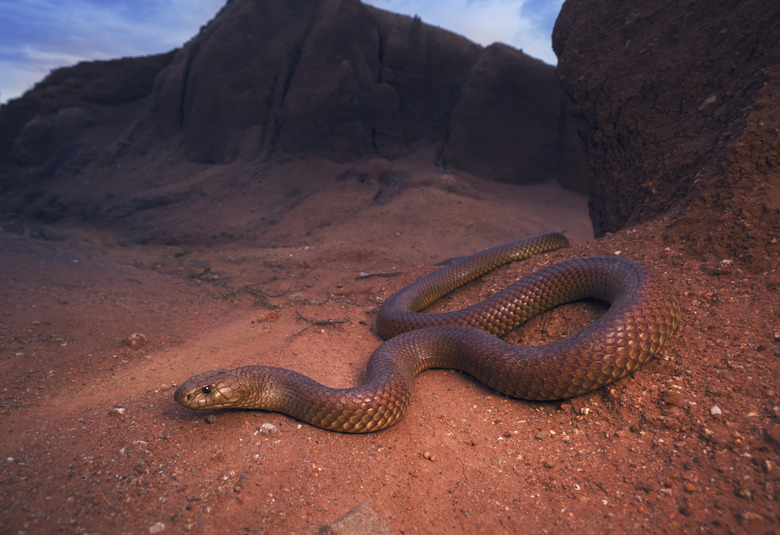What Are Three Adaptations That Reptiles Have For Conserving Water?
Reptiles evolved from amphibians 350 million years ago. When they emerged from the water, reptiles developed several adaptations allowing them to thrive in every environment except the arctic tundra. These adaptations allowed the dinosaurs to rapidly spread over the Earth and smaller reptiles, including turtles, alligators, snakes and lizards, to continue to thrive and evolve after the dinosaurs' extinction.
The Need for Water Conservation Adaptations
The Need for Water Conservation Adaptations
Many reptiles live in dry areas where finding adequate drinking water is difficult. Water is essential to cellular function, and therefore to health. Cells shrivel and die without enough water. Reptile adaptations allow them to get most, if not all, of the water they need from the food that they eat. Specifically, changes in how reptiles reproduce, dry scaly skin and highly efficient kidneys all allow reptiles to thrive with very little water.
Reptile Skin
Reptile Skin
Amphibians, such as frogs, have wet skin and are dependent on constant access to water to keep their bodies from drying out. The reptile's dry skin is a key evolutionary shift from their amphibian ancestors. This adaptation has allowed them to move into very dry habitats. Reptile skin is a solid sheet of keratin scales. Keratin is the same substance as human hair and nails. This makes it waterproof and prevents the reptile's internal fluids from evaporating.
Reptile Kidneys
Reptile Kidneys
Reptiles are able to conserve much of their body's water because their kidneys are very efficient. A reptile's kidneys are specially adapted to concentrate the body's waste products into uric acid. Once the wastes are collected and converted, the reptile is able to reabsorb most of the liquid used in the process. Elimination also requires very little fluid because the waste is concentrated into tiny, semisolid bundles of uric acid that don't absorb liquid and need very little fluid to be flushed from the body.
Reptile Eggs and Fertilization
Reptile Eggs and Fertilization
Unlike their amphibious ancestors, reptile fertilization is internal and does not require water. Once fertilized, reptile eggs are specially adapted to conserve water. The embryo is enclosed in a fluid filled sac, surrounded by three outer layers specially designed to balance the embryo's needs for water and respiration. Some reptiles lay their eggs, others give birth to live young. Keeping the eggs inside the body prevents them from retaining too much water as sometimes happens with externally developing eggs. Too much water is as harmful as too little because cellular needs are very exact.
Cite This Article
MLA
Glass, Meredyth. "What Are Three Adaptations That Reptiles Have For Conserving Water?" sciencing.com, https://www.sciencing.com/three-adaptations-reptiles-conserving-water-8549538/. 22 November 2019.
APA
Glass, Meredyth. (2019, November 22). What Are Three Adaptations That Reptiles Have For Conserving Water?. sciencing.com. Retrieved from https://www.sciencing.com/three-adaptations-reptiles-conserving-water-8549538/
Chicago
Glass, Meredyth. What Are Three Adaptations That Reptiles Have For Conserving Water? last modified March 24, 2022. https://www.sciencing.com/three-adaptations-reptiles-conserving-water-8549538/
